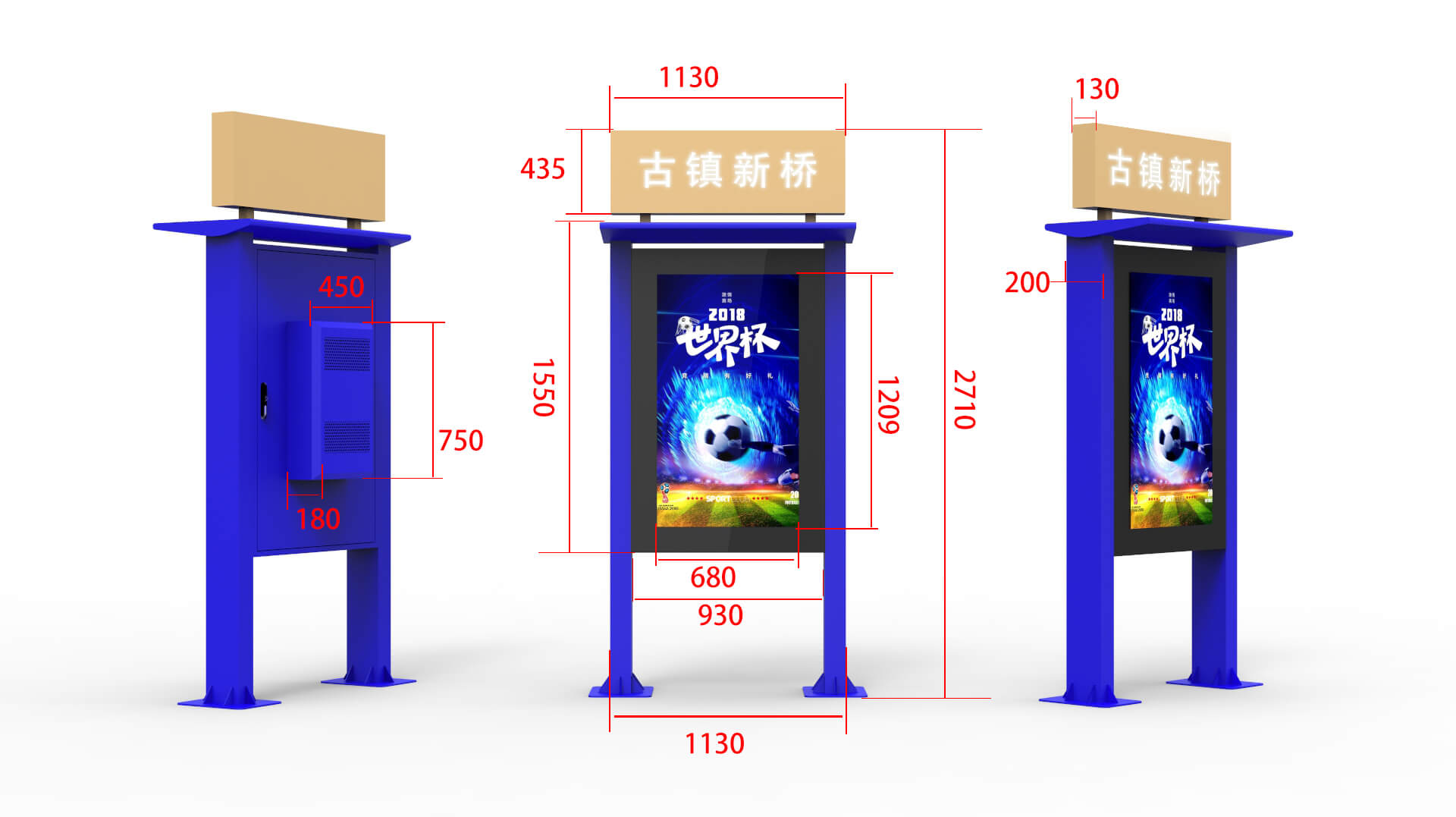What is Digital Signage?
What is Digital Signage?Digital Signage, often referred to as the fifth media following paper media, radio, television, and the internet, is a rapidly emerging and evolving concept in the field of media. This article aims to provide a comprehensive understanding of Digital Signage, exploring its definition, components, applications, market trends, and the future of this innovative technology.

Definition of Digital Signage
Digital Signage, as the name implies, refers to the use of digital screens to display information. Specifically, it involves the utilization of large-screen terminals in various public places, such as malls, supermarkets, hotel lobbies, restaurants, cinemas, airports, subway stations, and streets, to broadcast commercial, financial, and entertainment content. This multimedia professional audiovisual system targets specific audiences in designated locations and timeframes, thereby achieving significant advertising effects.
Components of Digital Signage
Digital Signage systems are typically comprised of several key components, which work together to deliver dynamic and engaging content. These components include:
Display Terminals: These are the large-screen devices where the content is displayed. They can be LCD monitors, LED screens, or any other type of digital display.
Media Players: These devices are responsible for playing the content on the display terminals. They can be standalone units or integrated into the display terminals themselves.
Content Management Systems (CMS): CMS is the brain of the Digital Signage system. It allows users to create, schedule, and manage the content that is displayed on the screens. This includes uploading new content, setting playback schedules, and monitoring the status of the display terminals.
Network Infrastructure: The network infrastructure connects all the components of the Digital Signage system. It ensures that content is transmitted smoothly from the CMS to the media players and displayed on the screens in real-time.
Software Tools: These tools are used to create and edit the content that is displayed on the screens. They can include video editing software, graphic design tools, and specialized Digital Signage content creation software.
Applications of Digital Signage
Digital Signage has a wide range of applications across various industries. Some of the most common applications include:
Retail: In retail settings, Digital Signage can be used to display promotions, product information, and advertising content. It can help attract customers' attention, increase sales, and enhance the overall shopping experience.
Corporate Communications: Corporations can use Digital Signage to communicate with employees and visitors. This includes displaying company news, announcements, and event information.
Public Spaces: In public spaces such as airports, train stations, and bus terminals, Digital Signage can be used to display travel information, advertising, and public announcements.
Healthcare: In healthcare facilities, Digital Signage can be used to display patient information, wayfinding, and educational content.
Education: Schools and universities can use Digital Signage to display class schedules, announcements, and educational content.
Market Trends and Growth
The Digital Signage market has been growing rapidly in recent years, driven by advancements in technology, increasing demand for dynamic and engaging content, and the need for effective communication in various industries. According to market research reports, the Digital Signage market is expected to continue growing at a significant rate in the coming years.
Several factors are contributing to this growth. Firstly, the increasing adoption of digital screens in various public places is creating a demand for Digital Signage solutions. Secondly, the development of more advanced and user-friendly CMS platforms is making it easier for businesses to create and manage content. Thirdly, the rise of IoT and smart city initiatives is driving the integration of Digital Signage into urban infrastructure.
Benefits of Digital Signage
Digital Signage offers a number of benefits over traditional static advertising methods. Some of the key benefits include:
Dynamic Content: Digital Signage allows for the display of dynamic and changing content. This means that businesses can update their messages in real-time, ensuring that the information displayed is always relevant and up-to-date.
Targeted Messaging: With Digital Signage, businesses can target specific audiences with tailored messages. This can help increase the effectiveness of advertising campaigns and improve customer engagement.
Cost-Effective: Digital Signage can be more cost-effective than traditional advertising methods. It allows businesses to reach a larger audience with a single investment in digital screens and CMS software.
Measurable Results: Unlike traditional advertising methods, Digital Signage offers measurable results. Businesses can track the performance of their campaigns and adjust their strategies accordingly to improve outcomes.
Future of Digital Signage
The future of Digital Signage looks promising. With the continuous advancement of technology, the integration of AI and machine learning, and the increasing demand for personalized and interactive content, Digital Signage is expected to become even more sophisticated and effective.
One of the key trends in the future of Digital Signage is the integration of interactive elements. This includes touch screens, motion sensors, and augmented reality (AR) technologies. These interactive elements can enhance the viewer experience, making it more engaging and memorable.
Another trend is the use of data analytics to optimize content. By analyzing viewer data, businesses can gain insights into what type of content is most effective and adjust their strategies accordingly. This can help improve the ROI of Digital Signage campaigns and make them more targeted and personalized.
Conclusion
Digital Signage is a powerful and versatile tool that can be used to deliver dynamic and engaging content to a wide range of audiences. With its growing adoption and continuous innovation, Digital Signage is set to play an important role in the future of media and communication. As technology advances and the market evolves, it will be exciting to see how Digital Signage continues to shape the way we interact with information and each other.
Application scenarios of digital signage

Tags:
self service kiosk touch kiosk digital signage interactive display interactive touch whiteboard kiosk video wall wall outdoor kiosk IP68 IP67 screen Shopping MallCurrent article link:
https://www.lcdkiosk.com/news/108.html







